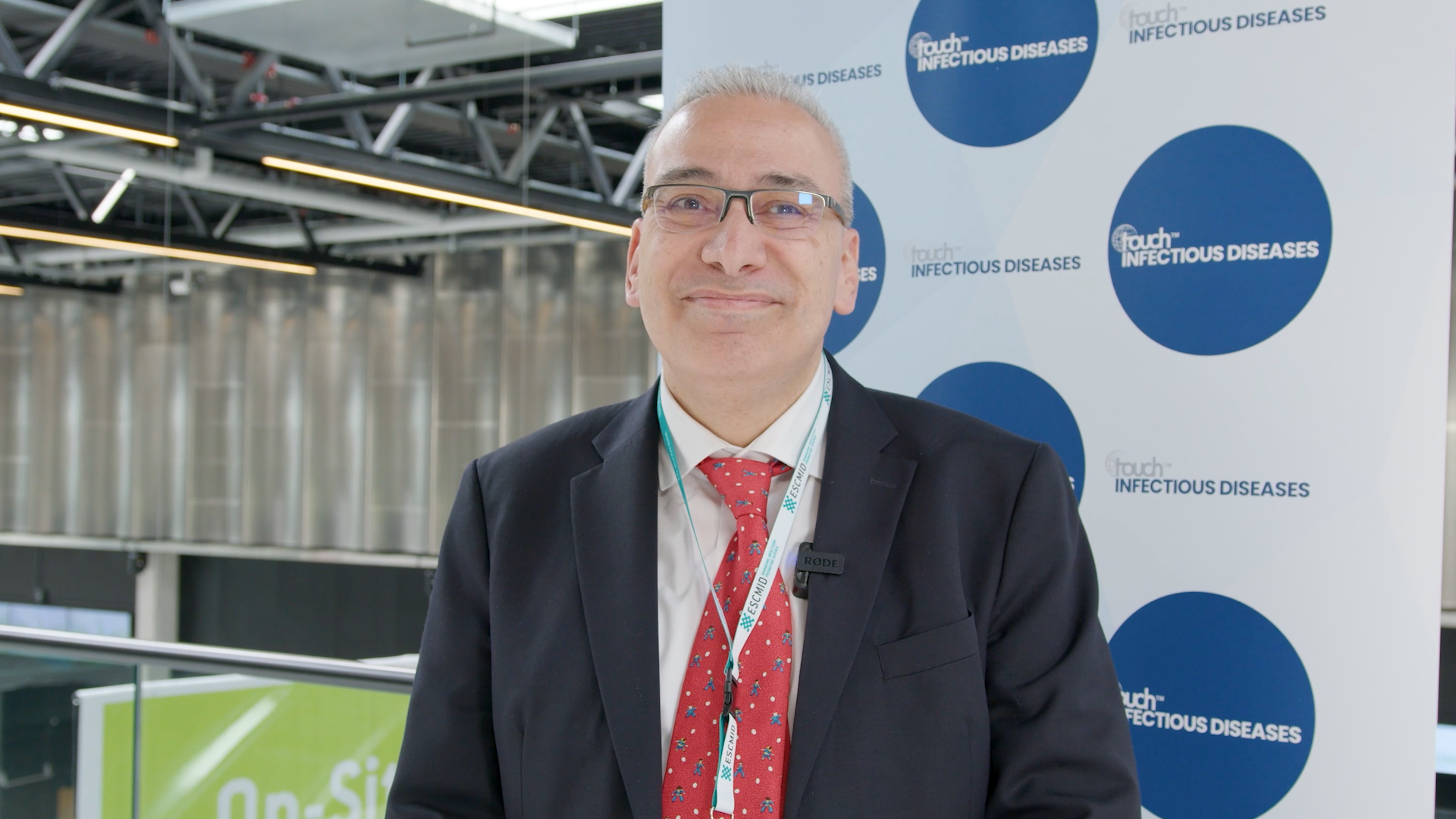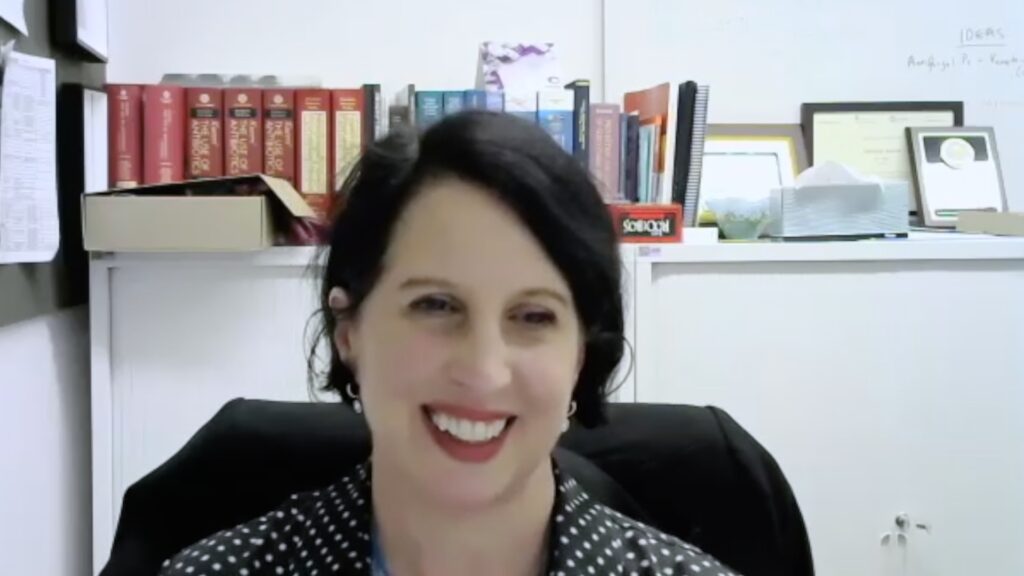Neonatal sepsis is often a result of pathogenic infection in a hospital setting and is a high risk for mortality especially in low and middle income countries. We caught up with Dr. Michelle Clements (University College London, London, UK) to discuss the aims, design and findings from their pilot study investigating the efficacy and safety of whole-body chlorhexidine gluconate skin application as a preventative measure for neonatal sepsis.
The abstract ‘Efficacy and safety of whole-body chlorhexidine gluconate (CHG) skin application, with or without emollient, in reducing bacterial skin colonisation of hospitalised low birth weight neonates: the NeoCHG trial.‘ (Abstract number: O0925) was presented at ECCMID 2023, 15-18 April, 2023, Copenhagen, Denmark.
Questions
- What is known about the incidence and risk of sepsis in neonates? (0:26)
- What was the rationale for combining chlorhexidine gluconate (CHG) with an emollient in the treatment of neonatal sepsis? (1:01)
- What were the aims, design, and inclusion criteria of the NeoCHG trial? (2:11)
- What were the safety and efficacy findings, and what did the findings indicate in terms of concentration and frequency of CHG dosage? (3:23)
- Following these findings what will be the next steps for CHG? (4:22)
Disclosures: Michelle Clements has nothing to disclose in relation to this video interview.
Support: Interview and filming supported by Touch Medical Media Ltd. Interview conducted by Katey Gabrysch and Victoria Jones.
Filmed in coverage of the 33rd European Congress of Clinical Microbiology & Infectious Diseases.
Click here for more content on sepsis & for further ECCMID 2023 highlights visit here.
Transcript
My name is Michelle Clements. I am a statistician at the Mercy Clinical Trials Unit at University College of London (UCL), UK. I work on clinical trials in neonatal sepsis and paediatric pneumonia in collaboration with people at St George’s University of London, UK and also with institutes around the world, mainly in Africa and Asia.
What is known about the incidence and risk of sepsis in neonates?
Sepsis is a substantial cause of neonatal mortality. There are over 3 million cases of sepsis every year with a mortality rate of 10% to 20% So it is quite a big issue, and this burden isn’t distributed evenly around the world. It’s much more prevalent in low and middle income countries, and also a particular risk are premature babies who are very small, and they have to be in hospital for a long time, so they’re vulnerable to picking up infections.
What was the rationale for combining chlorhexidine gluconate (CHG) with an emollient in the treatment of neonatal sepsis?
Chlorhexidine gluconate is a widely used antiseptic. It is already known to reduce mortality in neonates born in the community. When applied to the umbilical cord after birth. So the next question that we were asking was then could it be useful if applied to the skin of premature babies who are in hospital to stop them getting bugs on the skin, which could then reduce the infection rate and then hopefully reduce deaths as well? Before we could go forward to a large trial aiming to reduce mortality, we need to know what treatment regimen to use, and so the NeoCHG trial was developed to test three different concentrations of chlorhexidine and frequency of application, because we want to make sure that we’re treating enough to be effective. But if we treat too much, there’s a risk we may cause skin problems, in these young, young, vulnerable babies. We were wanting to find the correct balance to take forward into a future trial to reduce neonatal mortality.
What were the aims, design, and inclusion criteria of the NeoCHG trial?
The aim of the NeoCHG trial was to find a treatment regimen to take forward into a large trial. It was a pilot trial conducted in two hospitals in Bangladesh and South Africa, recruiting 200 babies. Approximately the design was a factorial design. We had three different concentrations of chlorhexidine, 0.5%, 1% and 2% And each baby that was randomized to chlorhexidine then was also randomized to a frequency of high frequency, that was every working day or low frequency, which was alternate working days. And they were also randomized to receive emollient or not receive emollient. There was also an additional standard of care arm with 16 babies who didn’t receive CHG or any emollient. And the inclusion criteria for NeoCHG was baby’s age, 1 to 6 days of age, and between 1 and 2 kilograms at birth. So very small babies where the safety of chlorhexidine was unknown, and so we wanted to test this thoroughly before we move into that larger trial.
What were the safety and efficacy findings, and what did the findings indicate in terms of concentration and frequency of CHG dosage?
In NeoCHG, we found no immediate skin problems. We were scouring the baby’s skin regularly from baseline until the earliest of day 14, or discharge. And we were scoring that on a score from zero, which was no issues to 12, and the vast majority, the babies were only scoring scores, 0 or 1, and there was one instance of a baby scoring two and no instances of 3 or above. So that was really positive, showing that chlorhexidine could be used in this vulnerable population.
Looking between the arms, however, there is no robust evidence that one particular treatment regimen was better than any of the others, both in terms of skin scores, which were already very low and in terms of the bacterial load on the skin.
Following these findings what will be the next steps for CHG?
The next steps are to work with the other trial investigators to determine which concentration and frequency regimen to take forward into a future larger trial. We also have another trial running in Malawi, which is looking at larger babies and laboring mothers and is also included and an additional alternative antiseptic. So we will be looking to combine both of those two results together before we make the eventual decision of which treatment to put in to a larger trial aiming to reduce mortality in neonatal sepsis in low and middle income countries.
Subtitles and transcript are autogenerated.



